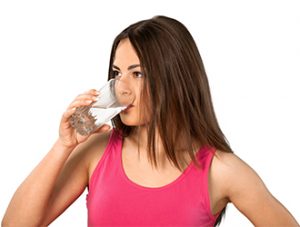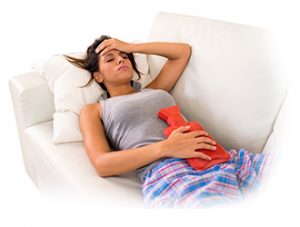Menstrual cramps occur when your uterus contracts to lose its lining, also referred as the uterine lining. This may cause pain in the upper thigh, lower back, groin, or stomach. Menstrual cramps are throbbing, extreme pain in your lower abdomen that occur just before and during your period. They’re some of the most prevalent, annoying aspects of your period. Many women experience them frequently.
Things that may aid with menstrual cramps
As it is painful, having menstrual cramps every month can be frustrating. There are numerous remedies available to help you relieve menstrual cramps. It’s important to realize that these strategies won’t always effective, especially for chronic conditions, although they can help with mild to moderate period pain.
1. Increase water intake to minimize bloating
Bloating can be uncomfortable and make menstrual pain worse. While it seems to be contradictory, water consumption during your period can help minimize bloating and pain. Drinking hot water helps calm your muscles and improve blood circulation. This can help to alleviate cramps caused by uterine contractions.
2. Herbal teas to relieve inflammation and muscular spasms
Certain herbal teas contain anti-inflammatory and antispasmodic ingredients that can decrease uterine muscle spasms that causes cramping. Menstrual cramps can be naturally reduced by drinking fennel, chamomile or ginger tea. Additionally, some herbal teas may offer benefits such as stress relief and assist with insomnia.
3. Consume anti-inflammatory foods to alleviate menstruation cramps.
Anti-inflammatory foods can aid or promote blood flow and uterine relaxation. Consume berries, pineapples, tomatoes, and spices such as ginger, turmeric, and garlic. Inflammation can also be decreased by eating leafy green vegetables, walnuts, almonds, and fatty fishes like salmon.

4. Drink decaf coffee to improve period pain
Caffeine causes your blood vessels to constrict. This can cause your uterus to tighten, making cramps more painful. Decaf is the best option if you must drink coffee during your period.
5. Try nutritional supplements to aid with menstrual symptoms
Vitamin D can help with absorption of calcium and reduction in inflammation. Other supplements, including as omega-3 fatty acids, vitamin E and magnesium, can help inflammation reduction and may even make periods less painful. For best results take supplements every day, not just during your period, Also, because certain supplements interact with medications, consult your doctor before taking anything new.
6. Apply heat to relieve cramping
A little heat can help relax your muscles, improve blood flow and relieve tension. Use a heating pad while you sit or take a hot shower.

7. Exercise for endorphins and muscular relaxation
Exercise might be the last option on your mind if you’re in pain. However, even light activity produces endorphins, which make you joyful, decrease pain, and relax muscles.
8. Reduce stress to minimize mental and physical menstrual symptoms
Cramps can be exacerbated by stress. Use stress-relieving techniques like meditation, yoga, deep breathing, or your own preferred method.
9. Massage therapy can help relieve cramps and stress.
Massage therapy was reported to considerably decrease menstrual difficulty in women with endometriosis in one research. Massages can assist to relieve uterine spasms by calming the uterus. Massage therapy should concentrate on the abdomen area to effectively treat period cramps. However, a full-body massage that relieves stress may also assist to reduce period cramps.
10. Try over-the-counter (OTC) medications.
Muscle spasms and pain can be caused by the hormone prostaglandin. Anti-inflammatory medications, such as ibuprofen, can provide immediate relief by lowering the amount of prostaglandins in your body. When you begin to feel cramps, try OTC medications for the best outcomes. OTC medications may not usually magically cure period cramps, but they can often greatly reduce pain.

